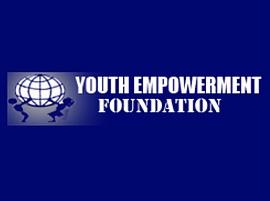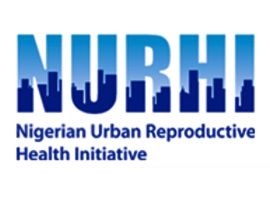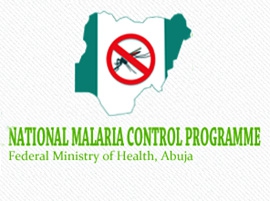DevComs Supports Inaugural Lecture titled "Securing the Future through Adolescent Nutrition"

Development Communications (DEVCOMS) Network a media-development, capacity-building, non-governmental organization coordinated by experienced development journalists supported the Public Lecture on Nutrition today at the Trenchard Hall, University of Ibadan, Oyo State.
The event was presented by the University of Ibadan, Department of Human Nutrition in collaboration with Nutrition Society of Nigeria.
The public lecture was aimed at informing and educating the cross-section of the populace on the importance of adolescent nutrition in breaking the intergenerational cycle of malnutrition and its attendant consequences.The lecture examined various interventions and strategies that could ensure the delivery of adolescent nutrition in Nigeria.
Participants include Academia, heads of various institutions in agriculture and Nutrition fields, Executive Secretaries of Primary Health care Board, Religious leaders, frontline health workers, undergraduate in Nutrition and health-related courses, schools of nursing, Media and midwifery, adolescents from secondary schools.
Securing the future of Nigerian adolescents require strategic nutrition-based approaches for sound physical and mental development . This is very important to wade off negative repercussions for growth into adulthood, says Mrs. Iwalola Akin-Jimoh, Executive Secretary, Youth Empowerment Foundation, Lagos Nigeria who was the main speaker at the event. The nutritionist and sports enthusiast made the assertions at the public lecture, titled: Securing the Future through Adolescent Nutrition, held today.
President of Nutrition Society of Nigeria (NSN), Dr. Batholomew Brai further said that the Public Lecture, organized by NSN in collaboration with the Department of Human Nutrition University of Ibadan, aims at informing and educating the cross-section of the populace on the importance of adolescent nutrition in breaking the intergenerational cycle of malnutrition and its attendant consequences.
Mrs. Akin-Jimoh reiterated, “as a matter of fact, many adolescents enter this phase of their lives with a legacy of very poor nutrition specifically malnutrition from early childhood, which means they arethin, stunted, anaemic and often also display micronutrient deficiencies and in some countries up to 50% of adolescents are stunted. She added that “the foundations for chronic health issues including obesity and diabetes based on poor food choices and sedentary life styles are being laid also during adolescence.”
The nutrition expert decried the negative trend where a certain percentage of adolescent girls are mothersstating that “even though fertility rates have declined globally, this is not the situation with adolescents. 1 in 3 girls are married before the age of 18 (UNFPA 2012). 16 million adolescent girls give birth worldwide and over 90% occur in low and middle-income countries. According to a 2018 World Bank repor “44% of adolescent girls are married before 18 years of age in Nigeria while adolescent fertility rate is 120/1000 (Multiple Indicator Cluster Survey -- MICS 2016/17). At least 31% of adolescents have at least 1 live birth (MICS 2016/17).
Listing the characteristics of adolescence the public lecturer explained that “whichever definition you go with, we note that it is a phase that a child has to go through to become an adult,” listing the stages as: Early adolescence (10–14 years): biologically dominated by puberty and the effects of the rapid rise in pubertal hormones on body morphology, and sexual and brain development. “Thus, psychologically it is characterised by low resistance to peer influences, usually low levels of future orientation, and low risk perception. This often leading to increases in risk taking behaviour and poor self regulation. It is a time of identity formation and development of new interests including emerging interest in sexual and romantic relationships. School and family environments are critical social contexts during this period,” she asserted.
Late adolescence (15–19 years): characterised by pubertal maturation, especially in boys, but in ways that are less visually obvious. At this time the brain continues to be extremely developmentally active. This later phase in adolescent brain development brings continued development · of executive and self-regulatory skills, leading to greater future orientation and an increased ability to weigh up the short-term and long-term implications of decisions. Family influences become distinctly different during this phase of life, as many adolescents enjoy greater autonomy, even if they still live with their families. Likewise, education settings remain important.
However, as a result of marginalisation of adolescents, poor socioeconomic status and unequal gender power predisposes girls to unwanted and unplanned pregnancies.” She asserted that adolescence is the second most crucial period of a child’s life for cognitive development and physical growth. “It is the last opportunity to reverse growth faltering experienced during childhood. This is because adolescence is a window of opportunity for life-long wellbeing. It is a time to build on early investments and offer a second chance for those who have not fared well in early childhood. Adolescents have the highest energy and protein requirements than any other group Micronutrient needs, specifically for Iron, Calcium, Zinc and vitamin D also increase significantly because of physical growth.”
She called on government at all levels to expedite action to secure the future for Nigeria because “promoting adolescent nutrition in early adolescence is indeed a last window of opportunity for many adolescents.”
The public lecture, chaired by Professor R.A. Sanusi, Professor of Nutrition, University of Ibadan, was witnessed by participants including members of academia, heads of various institutions in agriculture and Nutrition fields, Executive Secretaries of Primary Health Care Board, Religious leaders, frontline health workers, undergraduate in Nutrition and health-related courses, schools of nursing, media and midwifery, and adolescents from secondary schools












